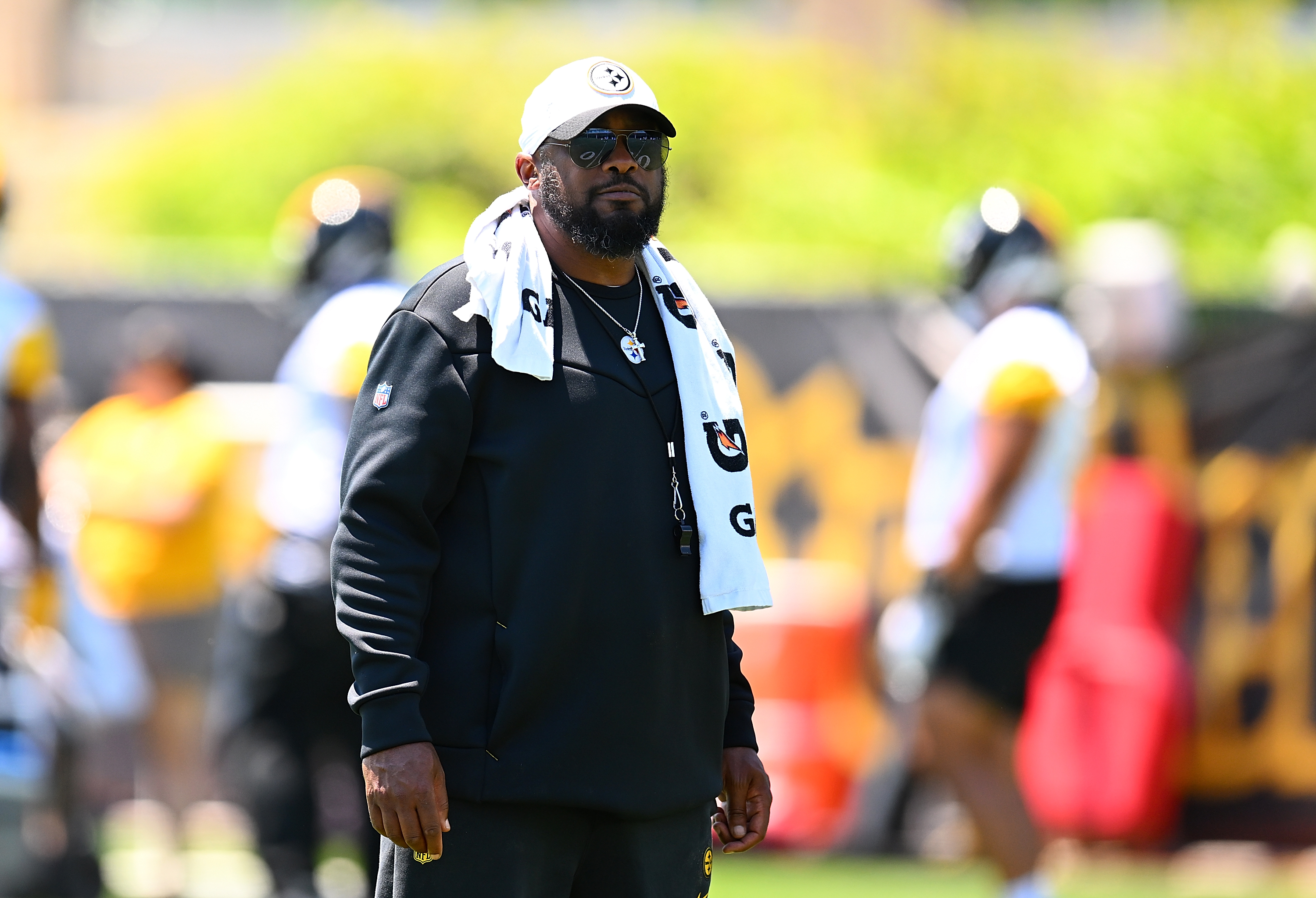The NFL is renowned for its physical demands, and players must possess a strong sense of toughness to withstand the game’s intense hits. This inherent physicality often fosters a competitive environment, which, unfortunately, can lead to fights during training camp. Pittsburgh Steelers head coach Mike Tomlin aims to curb this behavior.
More news: Former Steelers Star Predicts Big Things for Justin Fields
Kay Adams, a well-known NFL insider, recently visited the Steelers’ training camp to interview players and coaches. During her chat with Coach Tomlin, she sought his views on the frequent brawls.
When asked if he supports training camp fights, Tomlin replied decisively, “absolutely not.” He elaborated, “While toughness is vital in our business, we aren’t assembling an MMA squad. Fights don’t contribute to winning games. They result in penalties and ejections. I get it; competitive spirits can escalate. However, we need to channel that energy into growth as we prepare for the season.”

Joe Sargent/Getty Images
Tomlin’s perspective acknowledges that fights are part of the football culture. Still, he doesn’t condone them. History shows that these skirmishes can have damaging consequences, including injuries that sideline players for significant periods. A notable example is former quarterback Teddy Bridgewater, who was injured during a fight while with the New York Jets. A punch from IK Enemkpali broke Bridgewater’s jaw, costing him an entire season and opening the door for Ryan Fitzpatrick to take over as starter.
More news: Steelers GM Shares Insights on Potential WR Trades
This incident illustrates how unnecessary altercations can have serious repercussions on a player’s career. As Tomlin pointed out, fights lead to penalties and can result in a player missing valuable time on the field. It’s crucial for teams to focus on maintaining composure, especially when the stakes are high.
While it’s common for tensions to flare in NFL training camps, finding a way to eliminate fights is essential for both player safety and team performance. It may take time, but the goal remains clear: create a more productive atmosphere on the field.
